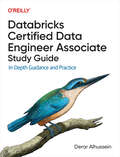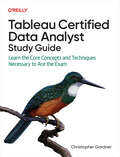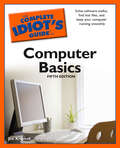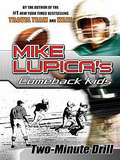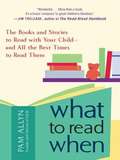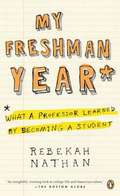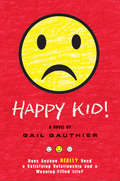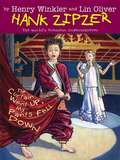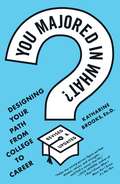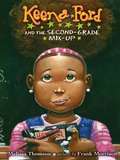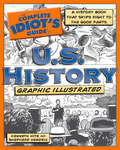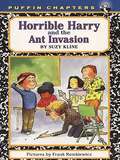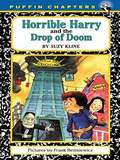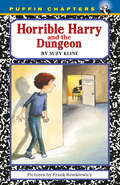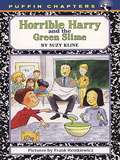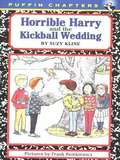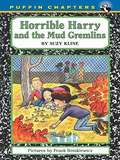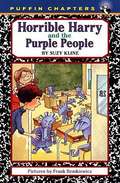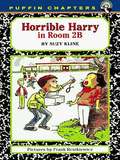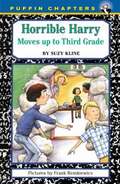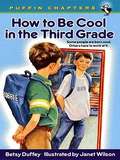- Table View
- List View
Databricks Certified Data Engineer Associate Study Guide
by Derar AlhusseinData engineers proficient in Databricks are currently in high demand. As organizations gather more data than ever before, skilled data engineers on platforms like Databricks become critical to business success. The Databricks Data Engineer Associate certification is proof that you have a complete understanding of the Databricks platform and its capabilities, as well as the essential skills to effectively execute various data engineering tasks on the platform.In this comprehensive study guide, you will build a strong foundation in all topics covered on the certification exam, including the Databricks Lakehouse and its tools and benefits. You'll also learn to develop ETL pipelines in both batch and streaming modes. Moreover, you'll discover how to orchestrate data workflows and design dashboards while maintaining data governance. Finally, you'll dive into the finer points of exactly what's on the exam and learn to prepare for it with mock tests.Author Derar Alhussein teaches you not only the fundamental concepts but also provides hands-on exercises to reinforce your understanding. From setting up your Databricks workspace to deploying production pipelines, each chapter is carefully crafted to equip you with the skills needed to master the Databricks Platform. By the end of this book, you'll know everything you need to ace the Databricks Data Engineer Associate certification exam with flying colors, and start your career as a certified data engineer from Databricks!You'll learn how to:Use the Databricks Platform and Delta Lake effectivelyPerform advanced ETL tasks using Apache Spark SQLDesign multi-hop architecture to process data incrementallyBuild production pipelines using Delta Live Tables and Databricks JobsImplement data governance using Databricks SQL and Unity CatalogDerar Alhussein is a senior data engineer with a master's degree in data mining. He has over a decade of hands-on experience in software and data projects, including large-scale projects on Databricks. He currently holds eight certifications from Databricks, showcasing his proficiency in the field. Derar is also an experienced instructor, with a proven track record of success in training thousands of data engineers, helping them to develop their skills and obtain professional certifications.
Tableau Certified Data Analyst Study Guide
by Christopher GardnerIn today's data-driven world, earning the Tableau Certified Data Analyst credential signals your ability to connect, analyze, and communicate insights using one of the industry's leading visualization platforms. This study guide offers practical and comprehensive preparation for the certification exam, with walk-throughs, best practices, vocabulary, and example questions to help you build both confidence and competence in Tableau.Written by Christopher Gardner, business intelligence analyst and lead Tableau developer at the University of Michigan, this guide supports first-time test-takers and seasoned users alike. You'll begin with foundational skills in Tableau Prep Builder and Tableau Desktop—connecting, combining, and preparing data—before progressing to building effective visualizations, performing calculations, and applying advanced tools like level-of-detail expressions, parameters, forecasts, and predictive analytics.Read, manipulate, and prepare data for analysisNavigate Tableau's tools to build impactful visualizationsWrite calculations and functions to enhance your dashboardsShare your work responsibly with secure publishing options
Mary Margaret Mary Christmas
by Christine Maclean Vicky LoweMary Margaret knows the true meaning of Christmas--presents!--and she is ready for her best Christmas yet. She has an ever-growing wish list and a tree with enough room at the bottom for lots of gifts. But when her teacher's snow globe disappears from his desk and Mary Margaret becomes the prime suspect, all she really wants for Christmas is her good name back (although she wouldn't say no to a present or two).
The Complete Idiot's Guide to Computer Basics, 5th Edition
by Joe KraynakTime for an upgrade! The fifth edition of The Complete Idiot's Guide® to Computer Basics places the reader in charge of the computer, rather than the other way around, and places the focus on software troubleshooting rather than hardware techno-babble. The reader wants to do something practical with his or her computer—this book shows them how.• Covers basic office programs and how to manage photo, video, and music files• Advice on safe web-surfing, including coverage of newsgroups, message boards, and mailing lists• New green computing initiatives that help protect the environment• Maintenance and upgrading information
Two-Minute Drill
by Mike LupicaChris Conlan is the coolest kid in sixth grade - the golden-armed quarterback of the football team and the boy all the others look up to. Scott Parry is the new kid, the boy with the huge brain, but with feet that trip over themselves. These two boys may seem like an odd couple, but each has a secret that draws them together, and proves that the will to succeed is even more important than raw talent.
What to Read When
by Pam AllynRead Pam Allyn's posts on the Penguin Blog The books to read aloud to children at the important moments in their lives. In What to Read When, award-winning educator Pam Allyn celebrates the power of reading aloud with children. In many ways, books provide the first opportunity for children to begin to reflectively engage with and understand the world around them. Not only can parents entertain their child and convey the beauty of language through books, they can also share their values and create lasting connections. Here, Allyn offers parents and caregivers essential advice on choosing appropriate titles for their children--taking into account a child's age, attention ability, gender, and interests-- along with techniques for reading aloud effectively. But what sets this book apart is the extraordinary, annotated list of more than three hundred titles suitable for the pivotal moments in a child's life. With category themes ranging from friendship and journeys to thankfulness, separations, silliness, and spirituality, What to Read When is a one-of-a-kind guide to how parents can best inspire children through reading together. In addition, Pam Allyn includes an indispensable "Reader's Ladder" section, with recommendations for children at every stage from birth to age ten. With the author's warm and engaging voice throughout, discussion questions to encourage in-depth conversations, as well as advice on helping kids make the transition to independent reading, this book will help shape thoughtful, creative, and curious children, imparting a love of reading that will last a lifetime. These Penguin Young Reader's Books are referenced in What to Read When Sylvia Jean: Drama Queen by Lisa Campbell Ernst (Penguin Young Reader's Group: 2005) Two Is For Twins, by Wendy Cheyette Lewison, illustrations by Hiroe Nakata (Penguin Young Readers: 2006) Remember Grandma? by Laura Langston (Penguin Group (USA): May 2004) Soul Looks Back in Wonder compiled by Tom Feelings (Puffin Books) Time of Wonder by Robert McCloskey (Penguin Books USA, Incorporated: December 1957) When I was Young in the Mountainsby Cynthia Rylant illustrated by Diane Goode (Penguin Young Readers Group: January 1993) Nana Upstairs and Nana Downstairs by Tomie DePaola (Puffin Books, an imprint of Penguin Books, Inc.:1973) Good Night, Good Knight by Shelly Moore Thomas, illustrations by Jennifer Plecas (Penguin Young Readers Group: 2002)
My Freshman Year: What a Professor Learned By Becoming a Student
by Rebekah NathanAfter more than fifteen years of teaching, Rebekah Nathan, a professor of anthropology at a large state university, realized that she no longer understood the behavior and attitudes of her students. Fewer and fewer participated in class discussion, tackled the assigned reading, or came to discuss problems during office hours. And she realized from conversations with her colleagues that they, too, were perplexed: Why were students today so different and so hard to teach? Were they, in fact, more likely to cheat, ruder, and less motivated? Did they care at all about their education, besides their grades? Nathan decided to put her wealth of experience in overseas ethnographic fieldwork to use closer to home and apply to her own university. Accepted on the strength of her high school transcript, she took a sabbatical and enrolled as a freshman for the academic year. She immersed herself in student life, moving into the dorms and taking on a full course load. She ate in the student cafeteria, joined student clubs, and played regular pick-up games of volleyball and tag football (sports at which the athletic fifty-something-year-old could hold her own). Nathan had resolved that, if asked, she would not lie about her identity; she found that her classmates, if they were curious about why she was attending college at her age, never questioned her about her personal life. Based on her interviews and conversations with fellow classmates, her interactions with professors and with other university employees and offices, and her careful day-to-day observations, My Freshman Year provides a compelling account of college life that should be read by students, parents, professors, university administrators, and anyone else concerned about the state of higher education in America today. Placing her own experiences and those of her classmates into a broader context drawn from national surveys of college life, Nathan finds that today's students face new challenges to which academic institutions have not adapted. At the end of her freshman year, she has an affection and respect for students as a whole that she had previously reserved only for certain individuals. Being a student, she discovers, is hard work. But she also identifies fundamental misperceptions, misunderstandings, and mistakes on both sides of the educational divide that negatively affect the college experience. By focusing on the actual experiences of students, My Freshman Year offers a refreshing alternative to the frequently divisive debates surrounding the political, economic, and cultural significance of higher education--as well as a novel perspective from which to look at the achievements and difficulties confronting America's colleges and universities in the twenty-first century.
My Freshman Year
by Rebekah NathanAfter fifteen years of teaching anthropology at a large university, Rebekah Nathan had become baffled by her own students. Their strange behavior--eating meals at their desks, not completing reading assignments, remaining silent through class discussions--made her feel as if she were dealing with a completely foreign culture. So Nathan decided to do what anthropologists do when confused by a different culture: Go live with them. She enrolled as a freshman, moved into the dorm, ate in the dining hall, and took a full load of courses. And she came to understand that being a student is a pretty difficult job, too. Her discoveries about contemporary undergraduate culture are surprising and her observations are invaluable, making My Freshman Year essential reading for students, parents, faculty, and anyone interested in educational policy.
Happy Kid!
by Gail GauthierAll cynical Kyle wants is to get through the seventh grade unnoticed, but a self-help book from his well-meaning mother changes all that. Magically, the book seems to know all about him. And it wants him to improve his life. Not only is he friendless, mistakenly taking super-difficult accelerated courses, and infamous for allegedly being involved in a violent "incident" on the bus (a rep that has the school terror sticking to him like glue), one of the true A Kids wants to lure him into questioning whether his class cheated on their state exams. How could a book help anyone through this kind of misery?
The Curtain Went Up, My Pants Fell Down
by Henry Winkler Lin OliverHank is failing math, so he has to work with Heather Payne, resident class brain, to help get his grades up. At the same time, Hanks school is putting on a production of "The King and I. " As coincidence would have it, Hank is cast as the King, and Heather as Anna. But when Hanks dad tells him he can only appear in the play if he gets a B on his next math test, Hank knows he has to hit the books. Can Hank pull through in time for the show?
The Curtain Went Up, My Pants Fell Down (Hank Zipzer, The World's Greatest Underachiever #11)
by Henry Winkler Lin Oliver Jesse Joshua Watson<p>Hank Zipzer is failing math, so he has to work with Heather Payne, resident class brain, to help get his grades up. At the same time, Hank's school is putting on a production of The King and I. <p>As coincidence would have it, Hank is cast as the King, and Heather as Anna. But when Hank's dad tells him he can only appear in the play if he gets a B on his next math test, Hank knows he has to hit the books. Can Hank pull through in time for the show? <p> <p><b>Lexile Level: 760L</b></p>
Emma Jean Lazarus Fell in Love
by Lauren TarshisEmma-Jean is experiencing something new and unsettling, but not entirely unpleasant. It's a fluttering in her heart when she imagines herself asking Will to the seventh-grade dance. Her best friend Colleen is worried that Will might laugh if Emma-Jean invites him. After all, Emma-Jean is a different kind of girl-certainly different from queen-bee Laura, who has always made it clear that Will is hers. Maybe Colleen can distract Emma- Jean from this risky plan by recruiting her for a top-secret investigation. You see, Colleen has an anonymous admirer, and if Emma-Jean can help her figure out who he is, then Colleen could ask him to the dance. Even more endearing and genuine than its predecessor, this companion to the award-winning Emma-Jean Lazarus Fell Out of a Tree steals your heart and inspires a smile that lasts as long as the novel itself. . . and longer.
You Majored in What?
by Katharine BrooksRead Katharine Brooks's posts on the Penguin Blog. As revolutionary as What Color Is Your Parachute?, this career guide for a new generation of job- seekers, from one of America's top college career counselors With the job market in flux, young people face The Question: what are you going to do with that major? In this indispensable guide, Dr. Katharine Brooks provides a road map for twenty-somethings, replacing obsolete thinking that "major = career," and instead using positive psychology, mapping techniques, and experimental wanderings to help job seekers reframe their skills. Brooks provides effective strategies to help readers mine their academic and life experiences for new insights into landing jobs with the best employers, and finding alternatives when the situation calls for a Plan B. You Majored in What? offers a practical and proven approach to reframing experiences, discovering overlooked opportunities, and finding a true calling, regardless of your undergraduate major or the state of the job market.
Keena Ford and the Second-Grade Mix-Up
by Melissa ThomsonMeet an irrepressible young lady with a flair for getting into trouble! Sassy, fun-loving Keena Ford always tries to do the right thing, but somehow, she just keeps making things worse. Keena is super excited about starting second grade and she?s eager to impress her new teacher?but why does Ms. Hanson think Keena?s birthday is tomorrow? It was a small mistake, but now Keena can?t turn down her very own chocolate cake and sparkly crown, can she? No more than she can help sneaking into her best friend Eric?s classroom to see if it?s really as much fun as he claims. Too bad nothing turns out quite the way she plans . . . This laugh-out-loud book by first-time author Melissa Thomson has short chapters and lively illustrations, making it perfect for beginning readers. .
The Complete Idiot's Guide to U.S. History, Graphic Illustrated
by Kenneth Hite Shepherd HendrixHistory comes alive!Presented in a high-impact, graphic novel format, The Complete Idiot's Guide® to U.S. History, Graphic Illustrated is a visually exciting and easy–to–understand alternative to boring textbooks. Innovative design and lively illustrations transport readers back in time to witness these events and more:• The changing lives of the Native Americans• The abolishment of slavery• The achievement of suffrage• The scandals, wars, and assassinations of the twentieth century• America's famous and infamous historical figures
Horrible Harry and the Ant Invasion (Horrible Harry #3)
by Suzy KlineIt's a busy time in Room 2B. An ant observation project is beginning, Miss Mackle is teaching square dancing, and class pictures are being taken. Then one of the fish from the 2B fish tank goes belly-up! Is Harry to blame? .
Horrible Harry and the Drop of Doom (Horrible Harry #12)
by Suzy KlineIt's the last day of second grade for the kids in Room 2B! Everyone's excited about Song Lee's end-of-the-year party at Mountainside Park. Harry can't wait for the scary rides, so when Sidney dares him to go on the newest one he quickly accepts. But then he realizes that this ride has the one and only horrible thing he hates. Will Sidney show everyone Harry's a yellow canary? And will Harry have to live through third grade at Sid's mercy? As always, Harry's appeal is that he's both gross and vulnerable.
Horrible Harry and the Dungeon (Horrible Harry #9)
by Suzy KlineThere's a new rule at South School? If you misbehave, you go to the Suspension Room (or "the Dungeon," as the students of Room 2B call it). The rumors are flying about what actually goes on down there, but Harry won?t be satisfied until he finds out for himself.
Horrible Harry and the Green Slime (Horrible Harry #2)
by Suzy Kline Frank RemkiewiczHarry leads a mission to place cobwebs all over school, shows the class how to make green slime, and stages a "deadly skit" that has everyone on the edge of their seats.
Horrible Harry and the Kickball Wedding (Horrible Harry #6)
by Suzy KlineAs Valentine's Day nears, the students in Room 2B prepare for a possible wedding between Horrible Harry and Song Lee. Delightful. . . . The characters are real and the story is fresh. --School Library Journal
Horrible Harry and the Mud Gremlins (Horrible Harry #20)
by Suzy KlineNo one knows why Harry is wearing a necklace. Sidney thinks they're for girls. But when Harry opens the necklace cover to reveal a mini-microscope, the whole class is intrigued. Everyone wants to try it, so Harry promises to show them all some wicked-looking fungi at recess. But he doesn't mentiom that to see them they'll need to go outside the fence-and that means breaking a school rule. Will everyone follow him? What if Miss Mackle finds out? Has Harry gone too far this time? Illustrated by Frank Remkiewicz. .
Horrible Harry and the Purple People (Horrible Harry #10)
by Suzy Kline Frank RemkiewiczRoom 2B been invaded by purple people! That's what Harry is saying, but no one else believes him. Can he prove that the purple people are real?
Horrible Harry in Room 2B (Horrible Harry #1)
by Suzy KlineDoug discovers that though being Harry's best friend in Miss Mackle's second grade class isn't always easy, as Harry likes to do horrible things, it is often a lot of fun. .
Horrible Harry Moves up to the Third Grade (Horrible Harry #13)
by Suzy KlineThird grade brings lots of surprises, but one thing hasn't changed a bit--Harry and Sidney are still sworn enemies. And their relationship only gets worse when Sidney accidentally kills Harry's pet spider. But Harry comes up with a horribly funny way to get revenge during a class trip to a scary old prison and a creepy copper mine.
How to Be Cool in the Third Grade
by Betsy DuffeyIt's not easy to seem cool when the whole class knows you wear superhero underwear and your mom still kisses you goodbye at the bus stop. But Robbie York has a plan. 1) Get rid of the name Robbie. 2) Get jeans. 3)Avoid bullies like Bo Haney. If only it were that simple!
